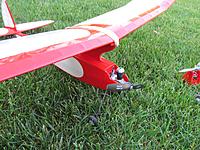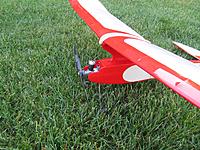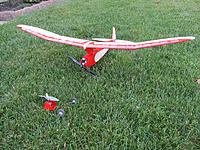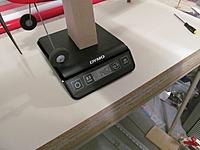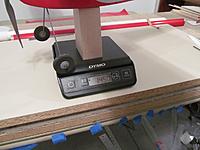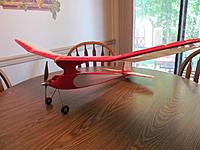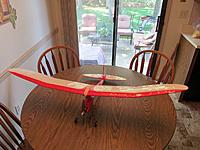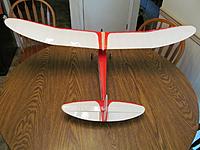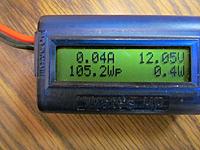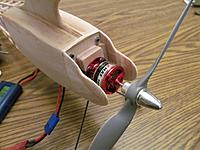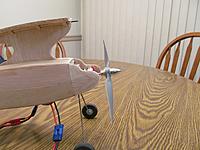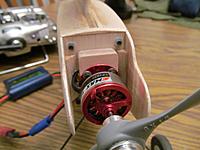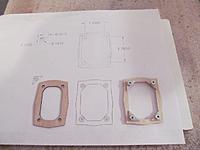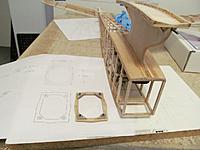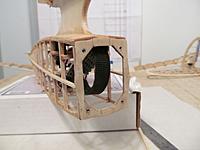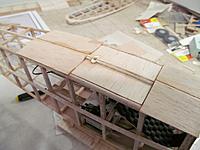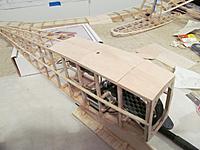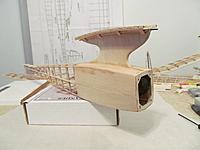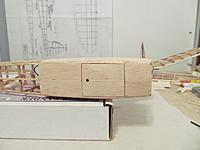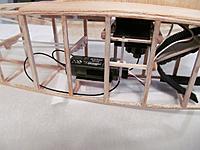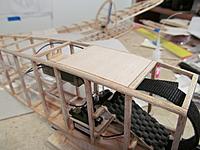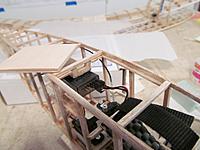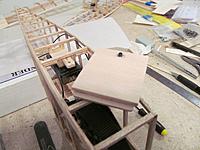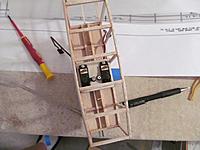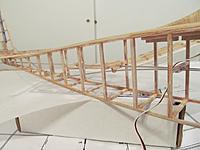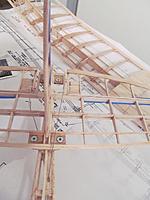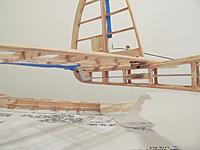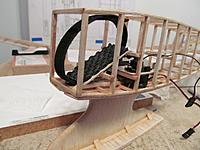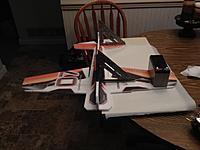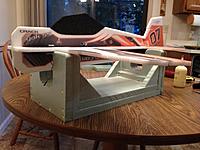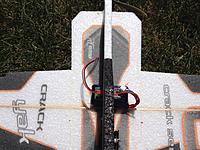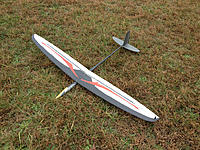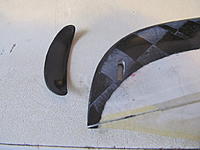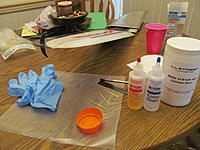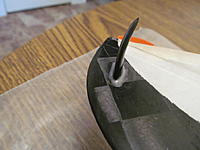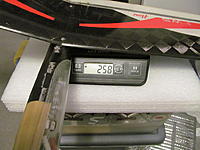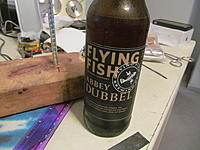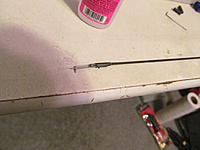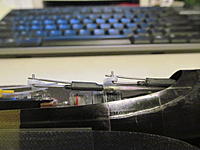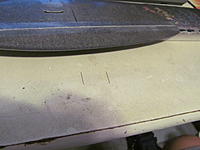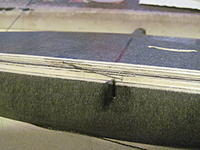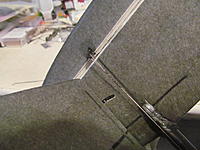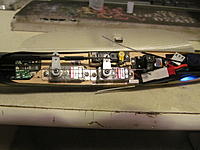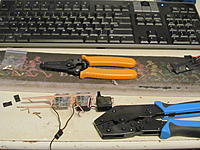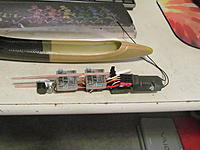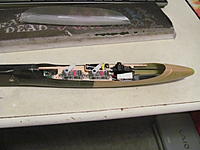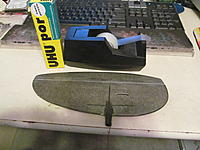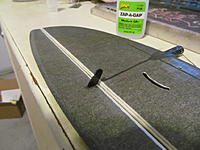Comments (2)
Add Comment
-
Views: 251
Cowl cheeks attached to the firewall. -
Views: 198
Cowl cheeks sanded, firewall filled top and bottom with balsa, and a 1/32" plywood supplemental landing gear support glued in place. -
Views: 262
Bones. -
Views: 280
More bones. Yes, I hate that hideous thing that my wife insisted on sticking to the wall. -
Views: 196
Even more bones.
-
Views: 261
Carbon fiber tow facing on the sub-fin. -
Views: 243
Combination engine mount/landing gear mount parts. -
Views: 239
Combination engine mount/landing gear mount glued and clamped. -
Views: 267
Completed combination engine mount/landing gear mount. -
Views: 241
Firewalls and cowl cheeks. -
Views: 262
Cox .049 engines. From left to right, one new Sure-Start, 1959 Babe Bee, mid-60's Babe Bee, and mid-60's Babe Bee/newer Sure-Start combined to make a dual bypass/dual boost, non-SPI Texaco beast. -
Views: 260
Electric power setup from Heads Up RC. -
Views: 252
1300kV motor.
-
Views: 247
Incorrect wing dimensions from the plan. Disregard the blue dimension that I marked on there, it is wrong too. -
 Views: 184
Views: 184
Here are they dimensions that I used to construct my wing. -
Views: 208
Right wing tip under construction. -
Views: 202
Wing joiners from the kit on top, the new ones on the bottom with the plan as a reference. -
Views: 204
Left wing tip epoxied, clamped and curing. -
Views: 201
Right wing tip. -
Views: 216
Wing halves curing. -
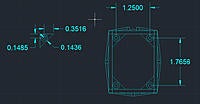 Views: 213
Views: 213
Firewall mounting hole locations laid out in CAD.
-
Views: 205
Left wing center pinned down. -
Views: 226
...and again.. -
Views: 220
I made some angle gauges to set the correct 1/2 angle. -
Views: 227
The left wing center. -
Views: 216
...and again showing the shear webs. -
Views: 229
Left wing tip pinned down. -
Views: 220
After lots of work there was this. -
Views: 206
It still needs a little more sanding.
-
Views: 238
1/8" balsa reinforcements were added to the last three bays, top and bottom. -
Views: 204
The 30 minute epoxy is setting up between the 1/16" plywood stab mounting tabs and the fuselage. -
Views: 206
1/16" balsa fills in between the tabs and then another piece of 1/16" balsa is laminated on top of the whole mess. -
Views: 190
The horizontal stab properly supported in it's drilling jig and awaiting four 1/8" holes. -
Views: 202
The drilling jig, constructed from basswood blocks and a piece of 1/2" plywood. -
Views: 202
2-56 cap screws and T-nuts hold it together. -
Views: 197
And one from underneath.
-
Views: 194
Elevator halves and rear part of the horizontal stabilizer are pinned down. -
Views: 187
The elevator close-out taper is apparent in this picture. -
Views: 192
Everything is glued. -
Views: 174
After a ridiculous amount of sanding I have this. -
Views: 207
I probably removed 1/3 of the wood during sanding. These parts are really light. -
Views: 198
Hard points were added for the rudder control horn, elevator control horn, and elevator joiner. 1/16" balsa gussets were added to strengthen the elevator trailing edge. The gusset grain runs at a 45 degree angle for maximum strength. -
Views: 197
The elevator joiner was installed and extends into holes carefully drilled into the elevator halves. This was easier to accomplish than I had suspected. First I tacked it with thin CA then really locked it in with medium CA. -
Views: 236
The elevator will be bottom hinged with covering. The top of the elevator close-out will need to be slightly beveled to increase up elevator throw. Up elevator throw will ultimately be limited by rudder interference.
-
Views: 234
Vertical stab pinned down. -
Views: 239
Vertical Stab sanded, rudder pinned down. -
Views: 242
Both are now complete except for hinges. The plan recommends tape hinges but are these compatible with nitro fuel? I was leaning towards CA hinges but perhaps covering hinges will be best in this application. -
Views: 225
Horizontal stab construction begins. It didn't take long to realize that a ton of sanding would be required as this thing has curves in every direction. -
Views: 233
It's starting to look like something here. I used a razor plane to taper the spar from the center to the ends. -
Views: 221
After some intense sanding I have this. -
Views: 269
This picture really shows the curvature. The stab was light before I started sanding. Now it is really light. :-) -
Views: 253
Here's what I have so far.
-
Views: 280
Plans, laser cut short kit, and the necessary lumber. -
Views: 279
Thank goodness for the Fourmost Products miter sanding tool. It results in some tight fitting verticals. -
Views: 242
Being a slow builder, I took two weeks to do the horizontals. -
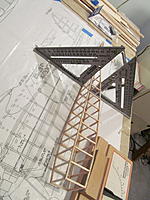 Views: 253
Views: 253
Horizontals were added while the fuselage was partially pinned down and squared. -
Views: 256
The pylon is installed. It consists of a laser cut piece of 1/4" balsa. -
Views: 278
The wing mounting platform is constructed from 1/8" balsa. I choose some medium-hard wood for this application. Fuselage top sheeting is also shown. -
Views: 263
1/8" stick is used to frame out the wing platform and to accept the wing's dihedral. -
Views: 343
I added some 1/8" sticks below the pylon to lock in the pylon. Also shown is my modified wing platform gusset. The plans called for a continuous run of 1/4" balsa triangle on either side of the pylon. I had other ideas. :-)

